We set off for Cashel, less than 2 hours away. As we drove through Waterford we saw a rotating stop/go sign which we found intriguing. We drove first through Kilkenny county and then into Tipperary so there were flags every where, first the amber and black of Kilkenny than the yellow and blue of Tipperary. There were more in Tipperary of course as they won!! It was raining most of the way, which was true to the forecast, and there were some big puddles on the road.
We walked up top to the Rock of Cashel with umbrellas
. The Rock of Cashel (Carraig Phádraig) is more formally St. Patrick's Rock. The tour was to start about 15 minutes later so we did walk around by ourselves first and considered not bothering with the tour. Fortunately we changed our mind as the tour was excellent.
The area was busy inspite of the rain, so our tour had to start outside. Even with the rain, the views were good. Long before the Norman invasion The Rock of Cashel was the seat of the High Kings of Munster although the buildings from the time have disappeared. It is believed this site was used from the 4th century. In 1101 a Munster King became King of all Ireland and handed the site to the Christian church. All buildings on the site were church buildings although here is a well that existed in the 4th century.
We started by the Round tower, which was used for refuge in case of attack. It originally was roofed with either timber or thatch but after the roof was destroyed by lightening it was eventually replaced with stone
. The entrance was up 10 feet so the clergy could climb in using a ladder then be safe from attackers The guide did say this assumes that the attackers didn't also have a ladder. The archbishop was also a local lord so the buildings were a fortress as well as a religious dwelling.
We saw the outside of the gothic cathedral. The square holes in the building would have been filled with the wood framing but it had rotted way to nothing over time, providing homes to local crows and pigeons.
The site honours St Patrick. We were shown a memorial and told the top is in pieces behind it. It shows St Patrick on a slave ship and then later when he baptized the King. This is reputedly the site of the conversion of Aenghus the King of Munster by St. Patrick in the 5th century AD. It is alleged that he accidently dropped a sharp item on the Kings foot and it actually pierced the Kings foot. Fortunately the King thought it was part of the ceremony and remained stoic so Christianity spread
. If he hadn’t the next hundreds of years could have been very different.
There is a gap in the hills nearby called the Devils Bite although it was too misty to see it. The story is that the Devil was in the country and had a mouthful of the range in his mouth, the Gap. Patrick scared him off and the Devil then dropped the food in his mouth which formed the Rock of Cachel itself. The problem with the legend is that the rock here is limestone and it is sandstone where the Gap is.
Nearby there is the remains of Hoare Abbey. It was an austere order who wore undyed woolen clothes which were white or grey. The term hoar frost has come from here. The abbey was one of the many dissolved by Henry VIII.
The site has a lot of graves, many with the Celtic cross. The oldest marked grave is from the 16th century. In the 1930’s, the authorities wanted to close the site to burials but there was an uproar locally. It was agreed that anyone living in the town at the time and their sons and daughters could be buried here so there are still a few new graves each year.
The tour took us into the remains of the cathedral. It was built in gothic style so it is dated by the style to have been built between 1230 and 1280. It was unusual in that the east end was the longer because it had to fit between the Round Tower and Cormic’s Chapel, which built 100 years earlier
. The narrow windows were also shortened as during the process of building because stained glass was being introduced and the archbishop shortened the windows a few feet to a size he could afford to put stained glass into.
There was a passageway one floor high that ran under the windows and round the altar end of the cathedral. This is so soldiers could move freely in case of attack. The archbishop would preach from a gallery that had a passageway behind it so he could escape to the Round Tower in case of attack. There was a solid door that could be bolted closed and above the door was there was a gap in the ceiling so boulders etc could be dropped onto any attackers. This is known as the Murder Hole.
There was one major attack, when Cromwell’s men moved through Ireland. They first attacked the town and many people fled up to the Rock for protection. This was to no avail because 1500 to 2000 people died in the attack. Cromwell then burned the cathedral and had the frescos erased. Some remnants were found when some plaster fell from the wall in the 1990’s and you can just make out Christ on the cross and a trellis background which was used in the Chapel previously.
We saw the St Patricks cross replica in the original position. The original is inside a building now to stop further deterioration. It originally had 2 side crosses but one had fallen off over the years
. The guide said there were beliefs that the cross could bring good luck. However, we have our doubts as he tried to tell us that holding your arms around the middle and holding your hands would mean perfect oral health so no more dental bills. No single person on the tour was prepared to hop 9 times around the cross backwards which is meant to mean you will marry within the year. The guide also told us about a former archbishop who was Catholic, turned Protestant when Elizabeth I was on the throne, married twice, had 47 children (not all to his wives) and reconverted to Catholic just before his death at 100. He was known as the Scoundrel of Cashel.
We then went into Cormic’s Chapel, which is built in about 1134 in Romanesque style so the arches were rounded. It is the only complete chapel of the time still complete. It was built ion sandstone which would have had to be delivered to the site. This allowed more intricate carving that would have been possible on the local limestone
. The guide pointed out the creatures which were a cross between human and animal and were a threat to the congregation. They would have been warned that if they were good they would go to heaven but if sinners they would be in hell in a form like the carvings. They also had human heads on an archway which are believed to represent the important people who would have been there for the dedication of the chapel.
There were some remnants of the frescos here, more than in the cathedral. The guided showed us what is believed to be a representation of the Magi in the ceiling. The robes were done in lapis laurel which he said was more expensive than gold at the time. The tomb at the end interested me when he said that originally it had the sign of infinity on it (although the top of one curve is missing).
The chapel was covered with scaffolding which is meant to be there for only 5 years. This is designed to drain rain water away from the building
. We were told that a year ago we would have seen water running down the walls when the weather was as it was today. They were perfectly dry so it is working although ugly. It is hoped a nicer solution will be found. The room also has an automatic fan to keep the humidity constant.
Out last stop was in the newest part, built 1430. This was the Vicars choral building where 8 people who formed the choir lived and sang. The ceiling has been restored in Irish oak. The room also had some furniture which was correct for period but came from another county. The choral would have been a link between the church and town because many members had family in the town. There was a replica of the seal on the wall, which was like a credit card. It would be shown to a local merchant when items were needed and at the end of the year the bill would be given to the archbishop. On the wall was a tapestry of Solomon and the Queen of Sheba in which deliberate flaws were made, because only God was perfect
. We were shown the man with 2 left feet and the woman with the man’s stomach.
I was so pleased we did do the tour as it was one of the best we have had, in spite of the rain. The rain had actually just stopped as we left and we had periods of sun as well as more rain for the rest of the day.
Our next stop was at an old abbey on the way to Tipperary town. Athassel Abbey was built in the 12th Century by the Augustinians. It is one of the country's most extensive monasteries, covering nearly four acres. The buildings were subsequently neglected and fell into ruin, and are now in the care of the Office of Public Works. The abbey is today used as a cemetery and it was odd to see graves all through the old buildings. There were a lot of crows around and I found the site quite creepy, although we have been through others that didn’t make me feel that way. It started to rain again and I was happy to move on.
At Tipperary we had lunch then looked at the shops with the intention of actually buying a souvenir here
. The area had been in the news because of the win in the Hurling but the information site was closed and the only shop that looked like it had souvenirs was closed.
We stopped at Cahil to visit the castle. However, it had mainly general castle information which we already knew a lot about. There was a good display about the attack on the castle by the troops led by the Earl of Essex in 1599 which we did spent some time at and it also said that the town just surrendered to Cromwell as they had learned that castle defences were limited against the more modern weapons. This it why the castle is fairly complete.
We were going to visit the Swiss House, an 18th century finely furnished property, but it is guided tours only and we would have had to wait for some time. Instead we took photos of the outside, peered in the windows (enough to convince us that we didn’t want to wait) and instead did some more caches on our way home.
We went to a Millennium Stone that was erected to celebrate the start of the new millennium and depicts the life and death of Christ
. It was dug from a nearby hillside and weighs 13.5 tonnes. The bronze panel was done by a local artist. It was 2 km along country roads so a nice drive in but an odd place for such an item.
The nicest was at St.Patricks Well where there is a weather-beaten small celtic cross, a tiny ruined chapel and holy well. The cache notes told us that
"The well has long been a popular place of pilgrimage. The waters from the well pour into a large circular pond at the foot of an old tree. The cross situated at the centre is of celtic style and dates back to early christianity. The little church measuring 42 feet long and 17 feet broad is over 375 years old. Within the church can be seen the Alter Tomb of the White Family which was brought from Old St.Mary's Church in Clonmel. It contains the remains of Nicholas White who belonged to the "House of York" throughout the War of the Roses in the 15th Century.”
It was a lovely peaceful spot
. An Indian family which included a nun arrived at the same time as us and a small group as we left. The water reminded me of Pupu springs as it bubbled up into the well and pond.
We retraced our footsteps from here to get back to Waterford, only to get caught out with the changed road near the city which gave us a 8km diversion on the motorway. When we arrived back at the house, Nuala and her children were here. They had come for a walk, to get some lettuce and to check on the fox. They didn’t have time for a drink but we did have a chat about our trips and plans. Nuala said it had be fine most of the day here.
We then went to the hotel in Dunmore East by the sea for tea. It was getting dark but we could see the outline of boats and the flash of Hook lighthouse. We talked to an Australian couple who were staying in the hotel overnight. They said that West Australia is still booing and that there own outback property is about to have a sealed road because of a new mine nearby.
At 10pm a local bar has live music so we went for a drink. There were a group of locals playing guitar, fiddle, accordion, pipes, banjo and drum. It was fun but it was getting late so we only stayed for a few tunes before heading home.
It's a long way...
Tuesday, September 07, 2010
 Ballymacaw, County Waterford, Ireland
Ballymacaw, County Waterford, Ireland
Other Entries
-
96Visiting the rellies in Kents Caves
Aug 2216 days prior Brampford Speke, United Kingdomphoto_camera12videocam 0comment 0
Brampford Speke, United Kingdomphoto_camera12videocam 0comment 0 -
97Moor travels
Aug 2315 days prior Brampford Speke, United Kingdomphoto_camera14videocam 0comment 0
Brampford Speke, United Kingdomphoto_camera14videocam 0comment 0 -
98Motoring to Bealieu
Aug 2414 days prior Chichester, United Kingdomphoto_camera10videocam 0comment 1
Chichester, United Kingdomphoto_camera10videocam 0comment 1 -
991066 and all that
Aug 2513 days prior Chichester, United Kingdomphoto_camera3videocam 0comment 0
Chichester, United Kingdomphoto_camera3videocam 0comment 0 -
100Catching up with Chalky and Pam
Aug 2612 days prior Chichester, United Kingdomphoto_camera16videocam 0comment 0
Chichester, United Kingdomphoto_camera16videocam 0comment 0 -
101Visiting Leeds Castle
Aug 2711 days prior Chichester, United Kingdomphoto_camera10videocam 0comment 0
Chichester, United Kingdomphoto_camera10videocam 0comment 0 -
102Chichester to Winchester to London
Aug 2810 days prior London, United Kingdomphoto_camera26videocam 0comment 0
London, United Kingdomphoto_camera26videocam 0comment 0 -
103Fast cars, a Palace and treacle
Aug 299 days prior London, United Kingdomphoto_camera6videocam 0comment 0
London, United Kingdomphoto_camera6videocam 0comment 0 -
104Cruising down the River
Aug 308 days prior London, United Kingdomphoto_camera11videocam 0comment 0
London, United Kingdomphoto_camera11videocam 0comment 0 -
105There'll be blue birds over......
Aug 317 days prior London, United Kingdomphoto_camera22videocam 0comment 0
London, United Kingdomphoto_camera22videocam 0comment 0 -
106To Ireland begorrah...
Sep 016 days prior Ballymacaw, Irelandphoto_camera2videocam 0comment 0
Ballymacaw, Irelandphoto_camera2videocam 0comment 0 -
107A fox on the run
Sep 025 days prior Ballymacaw, Irelandphoto_camera3videocam 0comment 0
Ballymacaw, Irelandphoto_camera3videocam 0comment 0 -
108Cuisin' the Copper Coast
Sep 034 days prior Ballymacaw, Irelandphoto_camera6videocam 0comment 0
Ballymacaw, Irelandphoto_camera6videocam 0comment 0 -
109Quick note to everyone re earthquake
Sep 043 days prior Ballymacaw, Irelandphoto_camera0videocam 0comment 1
Ballymacaw, Irelandphoto_camera0videocam 0comment 1 -
110A shaky start
Sep 043 days prior Ballymacaw, Irelandphoto_camera6videocam 0comment 0
Ballymacaw, Irelandphoto_camera6videocam 0comment 0 -
111From Famine ships to hurling
Sep 052 days prior Ballymacaw, Irelandphoto_camera4videocam 0comment 0
Ballymacaw, Irelandphoto_camera4videocam 0comment 0 -
112By Hook or by Crooke
Sep 061 day prior Ballymacaw, Irelandphoto_camera14videocam 0comment 0
Ballymacaw, Irelandphoto_camera14videocam 0comment 0 -
113It's a long way...
Sep 07 Ballymacaw, Irelandphoto_camera17videocam 0comment 0
Ballymacaw, Irelandphoto_camera17videocam 0comment 0 -
114Wandering about Wexford
Sep 081 day later Ballymacaw, Irelandphoto_camera15videocam 0comment 0
Ballymacaw, Irelandphoto_camera15videocam 0comment 0 -
115The Rain of Kerry
Sep 092 days later Ballymacaw, Irelandphoto_camera5videocam 0comment 0
Ballymacaw, Irelandphoto_camera5videocam 0comment 0 -
116Nothin' much doin'
Sep 103 days later Ballymacaw, Irelandphoto_camera3videocam 0comment 0
Ballymacaw, Irelandphoto_camera3videocam 0comment 0 -
117A load of Blarney
Sep 114 days later Ballymacaw, Irelandphoto_camera15videocam 0comment 0
Ballymacaw, Irelandphoto_camera15videocam 0comment 0 -
118The products of Waterford
Sep 125 days later Ballymacaw, Irelandphoto_camera13videocam 0comment 0
Ballymacaw, Irelandphoto_camera13videocam 0comment 0 -
119Doin' Dublin
Sep 136 days later Ballymacaw, Irelandphoto_camera14videocam 0comment 1
Ballymacaw, Irelandphoto_camera14videocam 0comment 1 -
120Old fossils in Kilkenny
Sep 147 days later Ballymacaw, Irelandphoto_camera17videocam 0comment 0
Ballymacaw, Irelandphoto_camera17videocam 0comment 0 -
121Ciao Ballymacaw
Sep 158 days later Rome, Italyphoto_camera2videocam 0comment 0
Rome, Italyphoto_camera2videocam 0comment 0 -
122Cheers Bros
Sep 169 days later Rome, Italyphoto_camera12videocam 0comment 0
Rome, Italyphoto_camera12videocam 0comment 0 -
123Roamin' Rome
Sep 1710 days later Rome, Italyphoto_camera8videocam 0comment 0
Rome, Italyphoto_camera8videocam 0comment 0 -
124All aboard please!!
Sep 1811 days later Civitavecchia, Italyphoto_camera8videocam 0comment 0
Civitavecchia, Italyphoto_camera8videocam 0comment 0 -
125Birthday on the Med
Sep 1912 days later Livorno, Italyphoto_camera38videocam 0comment 0
Livorno, Italyphoto_camera38videocam 0comment 0 -
126A lucky break at Monte Carlo...
Sep 2013 days later Monte-Carlo, Monacophoto_camera34videocam 0comment 3
Monte-Carlo, Monacophoto_camera34videocam 0comment 3 -
127The rain in Spain...
Sep 2114 days later Barcelona, Spain and Canary Islandsphoto_camera22videocam 0comment 0
Barcelona, Spain and Canary Islandsphoto_camera22videocam 0comment 0 -
128Getting into Gaudi
Sep 2215 days later Barcelona, Spain and Canary Islandsphoto_camera6videocam 0comment 0
Barcelona, Spain and Canary Islandsphoto_camera6videocam 0comment 0 -
129Meandering through Mallorca
Sep 2316 days later Mallorca, Spain and Canary Islandsphoto_camera5videocam 0comment 0
Mallorca, Spain and Canary Islandsphoto_camera5videocam 0comment 0 -
130A lazy day at sea
Sep 2417 days later Palma de Mallorca, Spain and Canary Islandsphoto_camera0videocam 0comment 0
Palma de Mallorca, Spain and Canary Islandsphoto_camera0videocam 0comment 0 -
131Out of Africa
Sep 2518 days later La Goulette, Tunisiaphoto_camera9videocam 0comment 0
La Goulette, Tunisiaphoto_camera9videocam 0comment 0

 Ballymacaw, County Waterford, Ireland
Ballymacaw, County Waterford, Ireland

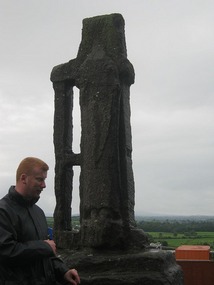
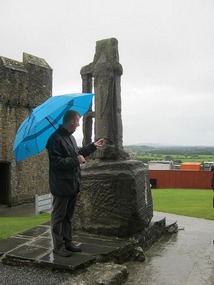
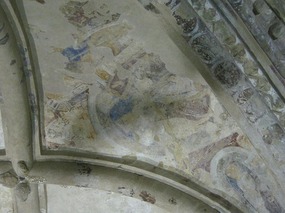
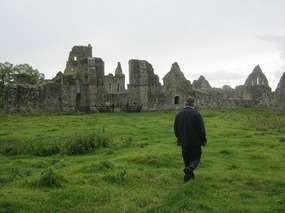
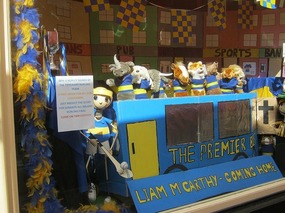
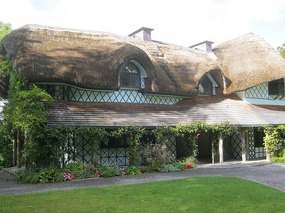
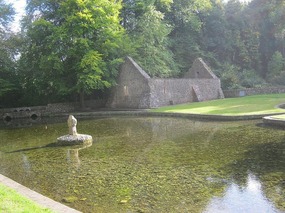
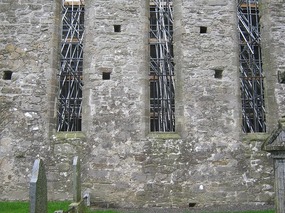








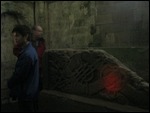

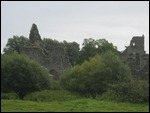
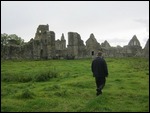

2025-05-22